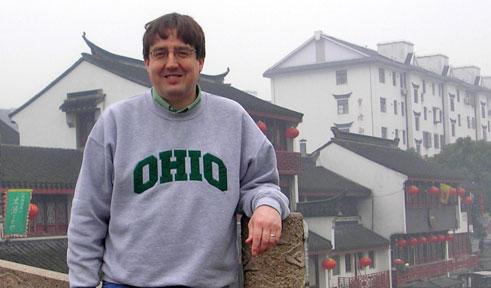
Education
Ph.D., Northwestern University
B.S., California Institute of Technology
Courses Taught
- CHEM 4760 Modern Inorganic Chemistry Fall Semester
- CHEM 4760L Advanced Inorganic Laboratory Fall Semester
- CHEM 7750 Theoretical Inorganic Chemistry Spring Semester
Research
- Inorganic Chemistry
Research in the Jensen Group is focused on transition metal coordination chemistry. We prepare small molecule complexes as active-site models for redox-active metalloenzymes that catalyze environmentally significant reactions. We address synthetic, structural, and mechanistic questions with respect to these enzymes that enable us to explore new coordination chemistry and exploit novel structures and reactivity.
Our strategy is exemplified by synthesis of hydrotris(pyrazolyl)borato (“Tp”) complexes of nickel(II) with dithiocarbamate co-ligands as models for nickel-dependent superoxide dismutases ( e.g.
, D. P. Barondeau, et al. Biochemistry
2004, 43
, 8038). A key feature of the enzyme active is an [N 3
S 2
] 3-
ligand field with an axial His-1 imidazole donor that stabilizes a Ni(II)/Ni(III) redox couple during substrate turnover. Similar to the enzyme, synthetic [TpNiS 2
CNR 2
] complexes adopt either low-spin (square-planar) or high-spin (square-pyramidal) geometries that enable solid-state spin crossover as well as a reversible one-electron redox couple in a range suitable for SOD activity. A key mechanistic question now accessible to biomimetic studies is the role of axial base ligation in controlling the spin state and redox chemistry.
We are also interested in the general ability of thiolate and phenolate ligands to induce oxido-reductase activity within small molecule Ni(II) complexes. For example, we prepared [TpNiOAr] complexes that decompose under O 2
, resulting in oxidative modification of aromatic C–H and C=C bonds. Analogous chemistry has been exploited to develop a new class of scorpionate-supported catalysts for nitrene transfer.
Undergraduate and graduate students joining our research team will have the opportunity to participate in cutting-edge work and to learn a wide variety of modern synthetic and analytical techniques. Our results have been presented at regional, national and international meetings, and are published in leading academic journals (vide infra). Recent alumni have continued on to graduate studies or have obtained employment in higher education or in chemical industry.
Selected Publications
Tapash Deb and Michael P. Jensen. ”Electrophilic Alkylation of Pseudotetrahedral Nickel(II) Arylthiolate Complexes.” Inorg. Chem. 2015, 54, 87-96.
Tapash Deb, Caitlin M. Anderson, Swarup Chattopadhyay, Huaibo Ma, Victor G. Young, Jr. and Michael P. Jensen. ”Steric and electronic effects on arylthiolate coordination in the pseudotetrahedral complexes [(TpPh,Me)Ni - SAr] (TpPh,Me = hydrotris{3-phenyl-5-methyl-1-pyrazolyl}borate).” Dalton Transactions 2014, 43, 17489-17499.
Shengwen Liang and Michael P. Jensen. “Half-sandwich scorpionates as nitrene transfer catalysts.” Organometallics 2012, 31, 8055-8058.
Shengwen Liang, Haoshuang Wang, Tapash Deb, Jeffrey L. Petersen, Gordon T. Yee, and Michael P. Jensen. “Structural and spectroscopic trends in a series of half-sandwich scorpionate complexes.” Inorg. Chem. 2012, 51, 12707-12719.
Tapash Deb, Gregory T. Rohde, Victor G. Young, Jr. and Michael P. Jensen. “Aerobic and hydrolytic decomposition of pseudotetrahedral nickel phenolate complexes.” Inorg. Chem. 2012, 51, 7257-7270.
Huaibo Ma, Jeffrey L. Petersen, Victor G. Young, Jr., Gordon T. Yee, and Michael P. Jensen. "Solid-State Spin Crossover of Ni(II) in a Bioinspired N 3 S 2 Ligand Field." J. Am. Chem. Soc. 2011, 133, 5644-5647.
